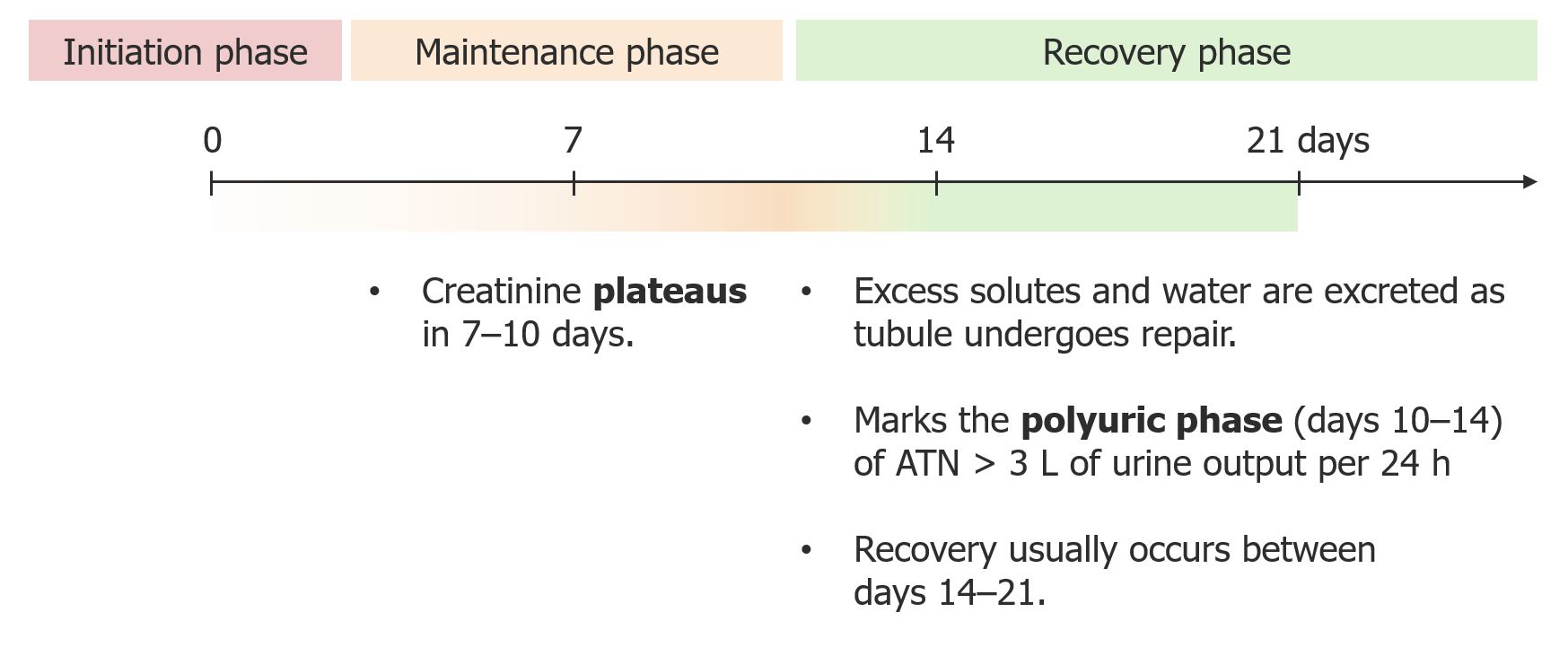Playlist
Show Playlist
Hide Playlist
Renal Case: 56-year-old Man with Coronary Angiography
-
Slides Nephrology Acute Kidney Injury.pdf
-
Reference List Nephrology.pdf
-
Download Lecture Overview
00:01 Let's now transition to the intrinsic renal portion. 00:04 So diseases that actually affect the tubules and interstitium are what we're gonna focus on. 00:09 And that includes acute tubular necrosis, acute interstitial nephritis and acute tubular obstruction. 00:18 So you're asked to see a 56-year-old gentleman who recently underwent coronary angiography with stent placement to his left anterior descending artery for acute coronary syndrome. 00:28 His serum creatinine was noted to increase 2 days following the procedure. 00:33 His physical exam is relatively unremarkable and his serological labs show that his serum creatinine is elevated to 2.3 mg/dL, so we see that that's high. 00:44 And his creatinine was 0.9 (mg/dL) which is normal on the day of the angiography, His BUN is only slightly elevated at 28 mg/dl. 00:53 He's given 2 liters of normal saline but his creatinine continues to rise. 00:57 So the question is, what type of acute kidney injury does this gentleman have? Let's go through our case and see if we can answer that question. 01:05 In the history, I think it's very important to note that temporal correlation between the administration of contrast and the creatinine rising essentially 48 hours after contrast administration. 01:17 We can also see on the laboratory data that that BUN to creatinine ratio is actually less than 15:1. 01:25 And when we see that, taken together with the history, that's very suggestive of a tubular injury. 01:31 The fact that he doesn't get better with volume replacement trying to correct his renal hemodynamics, really does suggest that there's intrinsic renal disease going on here. 01:40 So the answer to our case, is that this gentleman does have intrinsic renal disease and in fact, has acute tubular necrosis from his radiocontrast administration.
About the Lecture
The lecture Renal Case: 56-year-old Man with Coronary Angiography by Amy Sussman, MD is from the course Acute Kidney Injury (AKI).
Included Quiz Questions
What effect can radiocontrast have on kidney function?
- Acute tubular necrosis causing intrinsic renal disease
- Change in biochemical metabolism affecting blood urea nitrogen serum levels
- Vasoconstriction of the afferent arteriole of the glomerulus, increasing serum creatinine levels
- Urinary retention causing obstructive renal disease
Customer reviews
1,0 of 5 stars
| 5 Stars |
|
0 |
| 4 Stars |
|
0 |
| 3 Stars |
|
0 |
| 2 Stars |
|
0 |
| 1 Star |
|
1 |
When was it mentioned that a ratio of 15:1 is suggestive of tubular injury? I don't think this lecture give enough information to us to specifically call this a ATN. Confusing.




